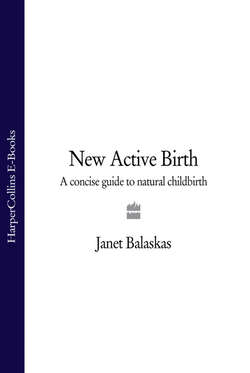Читать книгу New Active Birth: A Concise Guide to Natural Childbirth - Janet Balaskas - Страница 9
Modern Western Practice
ОглавлениеObstetric practice in the modern world is usually regarded as a medical, if not surgical, procedure. Until recently, the normal practice in most hospitals has been (and often still is) to place you, when you are in labour, in bed on your back; at best propped up by pillows into a semi-reclining position, where monitors, drips or anaesthetic can be conveniently applied. Later, just before the time of actual birth, you may be transferred to a delivery room and placed on an obstetric table where a forceps delivery, vacuum extraction, episiotomy or Caesarian section can be performed, or, at best, your baby can be most conveniently ‘delivered’ by your attendants,
In many hospitals the choice of birth positions is already predetermined by the approach to maternity care and the routine hospital practices. Usually, the training of midwives and doctors takes the recumbent position for granted in specific obstetric practices, such as:
The continuous assessment of foetal heart tones, uterine and other vital signs during labour and the use of electronic heart monitors which were designed for use in the recumbent position. Paradoxically, these often cause the foetal distress they are meant to detect by the imposition of the supine position for their use (1).
Midwives are usually trained to do periodic vaginal examinations with the mother lying on her back. Where birth is active there is less need for vaginal examinations, as the progress of labour can usually be assessed by the mother’s behaviour. If an internal examination is considered to be necessary, it can usually be done conveniently enough with the mother remaining upright.
The use of sedatives, oxytocin drugs, analgesics and anaesthesia during labour and delivery. If the mother is not lying down in the first place she is less likely to need pain relief or induction.
The use of forceps and/or episiotomy for delivery, or the need for the midwife to routinely ‘control’ the delivery or ‘guard’ the perineum. All these practices are not usually needed in an Active Birth.
When such practices are routinely used, labour and birth are seen from the outset as a potentially pathological situation in which attendants and their attendant technology are in control, rather than the woman herself, her instincts and her biological body.
No one will deny the enormous advantages of the safety net of modern obstetrics when problems occur which may threaten the life of mother or baby, or both. However, the vast majority of labours have the potential to be uncomplicated, and it is clear that common sense in the management of labour has been completely obscured by the routine application of interventive obstetrics to normal labour, resulting in a great increase in the number of forceps deliveries and Caesarean sections.
In many countries in the developed world the majority of babies born in hospital are delivered by forceps, or induced, or both, and the Caesarean rate may be as high as 30 per cent. In the USA, approximately one in four births (25 per cent) result in a Caesarean which reflects a 400 per cent increase in the last 20 years (2). In some hospitals, as many as one in three births are Caesarean, and in some large teaching hospitals the figure is closer to 60 per cent.
Amongst other reasons, the rigid insistence on making women in labour lie on their backs contributes largely to these figures. It seems that a vicious circle arises as soon as we begin to intervene in the natural process – the possibility of complication increases, the need for intervention and for pain-relieving drugs becomes more prevalent. When a labouring woman is immobilised and forced to lie on her back, the natural process is fundamentally disturbed and the likelihood of problems occurring increases.
